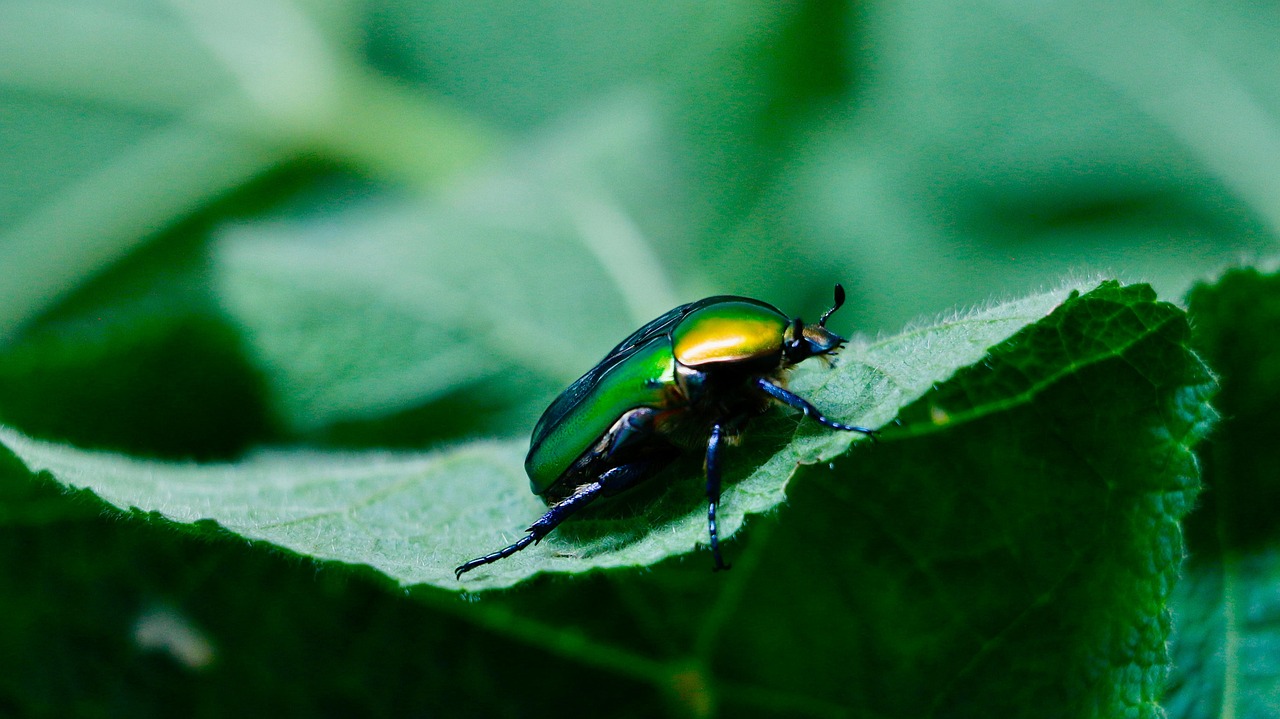This article explores effective natural remedies to prevent insects from damaging your plants, offering practical insights and strategies to protect your garden without harmful chemicals.
Understanding Common Garden Insects
Identifying the types of insects that typically invade gardens is crucial for effective management. Common pests such as aphids, caterpillars, and whiteflies can cause significant damage by feeding on plant leaves. Understanding their life cycles and feeding habits enables gardeners to implement timely interventions.
Identifying Signs of Insect Damage
Recognizing the signs of insect damage on plants is essential for early intervention. Look for yellowing leaves, holes in foliage, or a sticky residue known as honeydew, which indicates the presence of pests. Early detection can prevent more severe infestations and protect your garden’s health.
Natural Insect Repellents: Essential Oils
Essential oils serve as powerful natural insect repellents. Oils such as peppermint, rosemary, and tea tree are effective against a variety of pests. To use them, mix a few drops with water in a spray bottle and apply directly to affected plants, ensuring you cover both the tops and undersides of leaves.
Homemade Insecticidal Soap
Homemade insecticidal soap is an effective solution for managing pests. A simple recipe involves mixing 1 tablespoon of liquid soap with 1 quart of water. Spray this mixture on affected plants, focusing on areas where insects are visible. This method is safe for most plants and can help eliminate soft-bodied pests.
Beneficial Insects: Allies in the Garden
Encouraging beneficial insects can help control pest populations naturally. Insects like ladybugs and lacewings are known to feed on aphids and other harmful pests. Planting flowers that attract these beneficial insects can create a balanced ecosystem in your garden.
Companion Planting Strategies
Companion planting involves growing certain plants together to deter pests. For example, planting marigolds alongside vegetables can repel nematodes and aphids. This natural strategy enhances biodiversity and promotes healthier plant growth.
Neem Oil: A Natural Pesticide
Neem oil is a well-known natural pesticide with multiple benefits. It disrupts the life cycle of insects and can be used on a variety of plants, including edibles. Mix neem oil with water and a few drops of soap, then spray on affected plants to deter pests effectively.
Garlic and Chili Pepper Spray
Garlic and chili pepper sprays can deter a variety of pests. To make this spray, blend 2 cloves of garlic and 1 tablespoon of chili powder with water. Let it steep overnight, strain, and spray on plants to create an unpleasant environment for insects.
Maintaining Plant Health: The First Line of Defense
Healthy plants are less susceptible to insect damage. Best practices for maintaining plant health include proper watering, adequate sunlight, and regular fertilization. Strong plants can better withstand pest pressures, reducing the need for interventions.
Physical Barriers: Protecting Your Plants
Using physical barriers can effectively shield plants from pests. Methods such as row covers, netting, and garden fleece can prevent insects from reaching vulnerable crops while allowing sunlight and moisture to penetrate.
Regular Monitoring and Maintenance
Regular monitoring is essential for early pest detection. Gardeners should inspect plants weekly for any signs of insect activity. Maintaining a routine check helps catch infestations early, allowing for timely and effective management.
Seasonal Strategies for Pest Management
Adapting pest management strategies according to the seasons enhances effectiveness. In spring, focus on prevention as plants begin to grow. In summer, monitor for pests more closely, and in fall, prepare for overwintering pests by cleaning up debris and dead plants.

Understanding Common Garden Insects
Identifying the types of insects that typically invade gardens is crucial for effective management. Gardeners often face a variety of pests that can significantly impact plant health and overall garden productivity. Understanding these common invaders allows for timely interventions, minimizing damage and promoting a thriving garden environment.
- Aphids: These small, soft-bodied insects are notorious for sucking the sap from plants, leading to wilting and stunted growth. They often excrete a sticky substance known as honeydew, which can attract other pests.
- Spider Mites: Microscopic in size, spider mites can cause significant damage by feeding on plant leaves, leading to yellowing and speckling. They thrive in hot, dry conditions and can reproduce rapidly.
- Whiteflies: Similar to aphids, whiteflies feed on plant sap and can weaken plants. They are often found on the undersides of leaves and can spread diseases through their feeding habits.
- Japanese Beetles: These beetles are known for their metallic green bodies and destructive feeding habits. They can skeletonize leaves, leaving behind a network of veins.
- Slugs and Snails: These mollusks are particularly problematic in moist environments. They feed on leaves, stems, and fruits, creating irregular holes and slime trails.
Each of these pests poses unique challenges to gardeners. For instance, aphids can reproduce quickly, leading to large infestations in a short period. In contrast, spider mites may go unnoticed until significant damage has occurred due to their small size. Understanding the life cycles, feeding habits, and preferred conditions of these insects is essential for effective management.
In addition to direct damage, many of these pests can transmit diseases to plants, further complicating garden health. For example, whiteflies can carry viral infections that affect various crops, making early detection and control vital.
To manage these pests effectively, gardeners should regularly inspect their plants for signs of infestation. This includes looking for visible pests, signs of feeding damage, and even the presence of natural predators such as ladybugs, which can help control aphid populations. Implementing an integrated pest management (IPM) approach that combines cultural, biological, and mechanical control methods can significantly reduce pest numbers and promote a healthier garden ecosystem.
In summary, understanding common garden insects is a fundamental step in maintaining a healthy garden. By recognizing the signs of these pests and their potential impact on plant health, gardeners can take proactive measures to protect their plants and ensure a vibrant and productive growing environment.

Identifying Signs of Insect Damage
is a crucial skill for any gardener looking to maintain a healthy and thriving garden. Early detection of insect infestations can save your plants from severe damage and ensure they continue to flourish. This section will guide you through the various indicators of insect damage, helping you to recognize issues before they escalate.
One of the first signs of insect damage is discoloration of leaves. Leaves may turn yellow, brown, or develop spots, indicating that pests are feeding on the plant’s tissues. For instance, aphids often cause curling and yellowing of leaves as they suck the sap from the plant. Regularly inspecting your plants for these changes can alert you to potential infestations.
- Chewed Edges: Look for leaves with ragged or chewed edges. This is a clear sign of insect activity, particularly from caterpillars or beetles.
- Webbing: The presence of webbing on plants is often indicative of spider mites. These tiny pests can cause significant damage if not addressed promptly.
- Sticky Residue: If you notice a sticky substance on your plants or surrounding surfaces, it could be honeydew excreted by aphids or whiteflies. This sticky residue can attract other pests and lead to fungal growth.
- Presence of Insects: Regularly check for visible insects on your plants. Look under leaves and along stems where pests like to hide.
Another important indicator is the presence of holes in leaves. These holes can vary in size and shape depending on the type of insect causing the damage. For example, leafcutter ants create perfectly round holes, while other insects may leave irregular shapes. Identifying the type of damage can help you determine the responsible pest.
Additionally, stunted growth or wilting plants can signal a problem. If your plants are not growing as expected or appear droopy, it may be due to root damage caused by pests like root maggots or nematodes. Inspecting the root system can provide insights into the health of your plants.
Finally, consider the timing of infestations. Many pests are more active during certain seasons. For example, aphids typically appear in the spring, while caterpillars are more prevalent in the summer. Keeping a seasonal calendar can help you anticipate and monitor for specific pests throughout the year.
In summary, by being vigilant and recognizing the signs of insect damage early, you can take prompt action to protect your plants. Regular monitoring, combined with an understanding of the common indicators of pest activity, will equip you with the knowledge needed to maintain a healthy and vibrant garden.
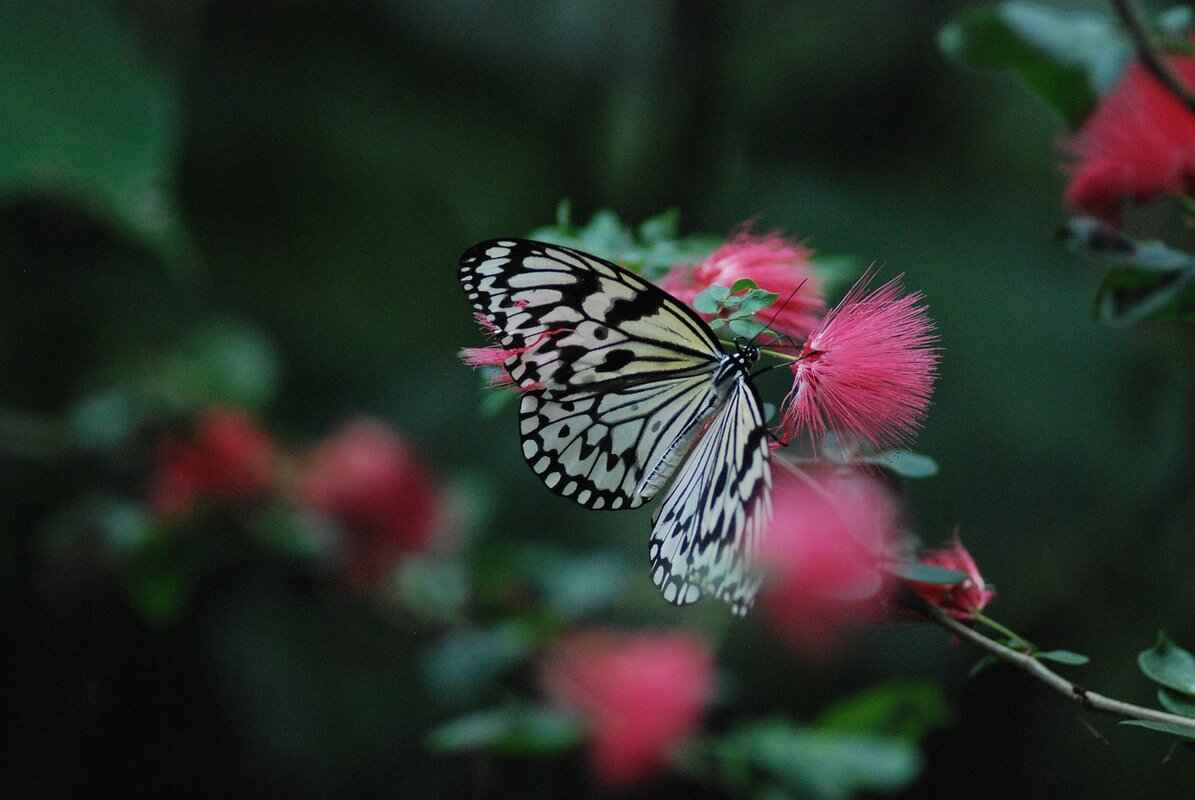
Natural Insect Repellents: Essential Oils
Essential oils are not just aromatic substances; they are powerful natural insect repellents that can help protect your plants from various pests. Many gardeners are increasingly turning to these oils as a safe and effective alternative to chemical pesticides. This section will explore different essential oils, their effectiveness, and practical ways to use them in your garden.
- Lavender Oil: Known for its pleasant scent, lavender oil is effective against moths, fleas, and mosquitoes. To use, mix a few drops with water in a spray bottle and apply it directly to the plants.
- Peppermint Oil: This oil has a strong scent that repels ants, spiders, and aphids. A simple solution can be made by combining 10-15 drops of peppermint oil with water and a small amount of dish soap. Spray on affected areas.
- Eucalyptus Oil: Eucalyptus is known for its ability to deter mosquitoes and other flying insects. Combine eucalyptus oil with water in a spray bottle and apply it around your garden to keep these pests at bay.
- Tea Tree Oil: This oil is renowned for its antibacterial properties and can also repel insects like lice and mosquitoes. Mix tea tree oil with water and spray it on the foliage.
- Citronella Oil: Often used in candles, citronella oil is also an effective insect repellent. It is particularly useful for keeping mosquitoes away. Dilute it in water and spray around your garden.
To maximize the effectiveness of these oils, consider the following application tips:
- Mixing: Always dilute essential oils with a carrier, such as water or a natural soap. This prevents damage to your plants and enhances the oil’s spreadability.
- Frequency: Reapply the oil mixtures every few days or after rainfall to maintain their effectiveness.
- Targeted Application: Focus on areas where you notice pest activity or potential infestations. This targeted approach minimizes waste and maximizes impact.
- Patch Testing: Before widespread application, test the oil mixture on a small section of your plant to ensure there is no adverse reaction.
In addition to their repellent properties, essential oils can also improve the overall health of your plants. They often possess antifungal and antibacterial properties that can help in preventing diseases. When using essential oils, it’s vital to choose high-quality, pure oils to ensure safety and effectiveness.
By incorporating essential oils into your pest management strategy, you can create a healthier and more sustainable garden environment. Not only do these oils provide a natural deterrent to pests, but they also contribute to the overall well-being of your plants, making them a valuable addition to any gardener’s toolkit.

Homemade Insecticidal Soap
is a highly effective and environmentally friendly solution for managing pests that threaten your garden. This natural remedy can be easily prepared with common household ingredients, making it accessible for gardeners looking to protect their plants without resorting to harsh chemicals. Below, we will explore a simple recipe for homemade insecticidal soap, along with application tips to ensure its effectiveness.
Homemade insecticidal soap is a natural pesticide made from a combination of soap and water, which can effectively eliminate soft-bodied insects such as aphids, spider mites, and whiteflies. The soap works by suffocating the insects, disrupting their cell membranes, and ultimately leading to their demise. Unlike synthetic pesticides, insecticidal soap is safe for humans, pets, and beneficial insects when used correctly.
Creating your own insecticidal soap is straightforward. Here’s a simple recipe:
- Ingredients:
- 1 tablespoon of liquid soap (preferably pure castile soap)
- 1 quart of water
- Instructions:
- Mix the liquid soap with water in a spray bottle or a garden sprayer.
- Shake gently to combine the ingredients without creating too many bubbles.
- Test the solution on a small area of the plant to ensure there is no adverse reaction.
To achieve the best results with your homemade insecticidal soap, consider the following tips:
- Timing: Apply the soap in the early morning or late afternoon to avoid direct sunlight, which can cause the soap to dry too quickly and reduce its effectiveness.
- Coverage: Ensure thorough coverage of the affected areas, including the undersides of leaves where pests often hide.
- Frequency: Reapply every 5 to 7 days, or after rain, until the pest problem is under control.
- Storage: Store any leftover solution in a cool, dark place and use it within a few weeks for optimal potency.
While homemade insecticidal soap is generally safe, there are a few precautions to keep in mind:
- Always use pure liquid soap without additives, fragrances, or degreasers, as these can harm your plants.
- Avoid using the soap on plants that are stressed or wilted, as they may be more susceptible to damage.
- Monitor your plants for any signs of adverse reactions after application, and discontinue use if necessary.
In summary, homemade insecticidal soap is an affordable and effective way to manage pests in your garden. By following the simple recipe and application tips provided, you can create a natural solution that safeguards your plants while promoting a healthier ecosystem.
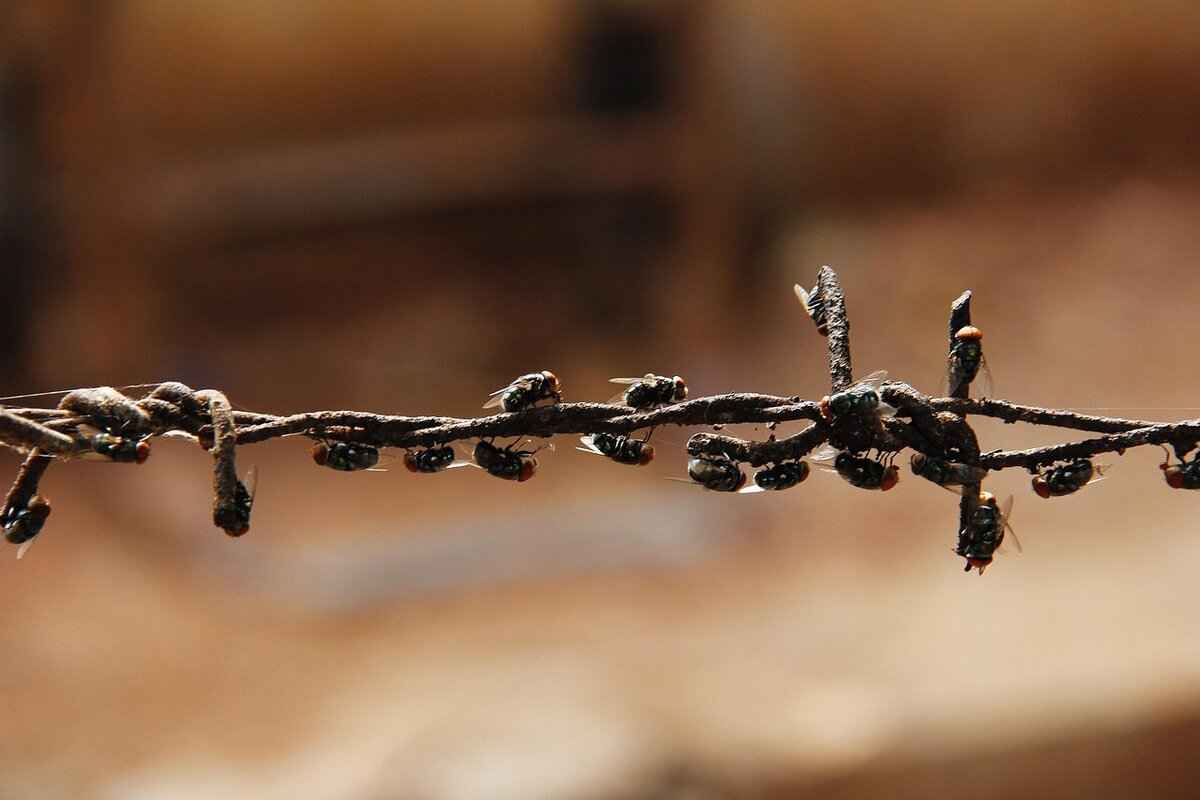
Beneficial Insects: Allies in the Garden
In the realm of organic gardening, understanding the role of beneficial insects is paramount. These tiny allies contribute significantly to maintaining a balanced ecosystem, providing natural pest control and promoting plant health. By encouraging these insects in your garden, you can effectively manage pest populations while minimizing the need for chemical interventions.
One of the most well-known beneficial insects is the ladybug. These charming beetles are voracious consumers of aphids, scale insects, and other soft-bodied pests that can wreak havoc on your plants. A single ladybug can eat up to 5,000 aphids in its lifetime, making it a formidable ally in the garden.
Another crucial player in the garden ecosystem is the lacewing larva, often referred to as “aphid lions.” These larvae consume a wide array of pests, including aphids, thrips, and spider mites. By attracting lacewings to your garden, you can significantly reduce pest populations naturally.
Parasitic wasps also play an essential role in pest management. These tiny wasps lay their eggs inside or on the bodies of pest insects, such as caterpillars and aphids. As the larvae develop, they consume the host insect, effectively controlling its population. By introducing plants that attract these wasps, such as dill and fennel, you can enhance your garden’s natural defenses.
Additionally, ground beetles are beneficial insects that thrive in garden soil. They feed on various pests, including slugs, caterpillars, and other soil-dwelling larvae. By maintaining healthy soil and providing habitats for ground beetles, you can promote their presence in your garden.
To attract these beneficial insects, consider planting a diverse range of flowers and herbs. Native plants are particularly effective, as they provide food and habitat for beneficial insects. Flowers like marigolds, yarrow, and calendula not only beautify your garden but also serve as nectar sources for pollinators and beneficial insects alike.
Another effective strategy is to create a pollinator-friendly habitat. This can be achieved by incorporating a variety of flowering plants that bloom at different times throughout the growing season. By ensuring a continuous supply of nectar and pollen, you can attract and sustain beneficial insect populations.
Moreover, it’s essential to avoid using broad-spectrum pesticides, as these can harm beneficial insects along with the pests. Instead, adopt integrated pest management (IPM) practices that focus on prevention, monitoring, and using targeted treatments only when necessary.
In conclusion, fostering a garden environment that encourages beneficial insects is a sustainable and effective approach to pest management. By understanding their roles and implementing strategies to attract them, you can create a thriving garden ecosystem that naturally controls pests while supporting plant health.

Companion Planting Strategies
Companion planting is a time-honored gardening technique that involves growing certain plants together to create a harmonious ecosystem. This strategy not only enhances growth but also serves as a natural means of pest control. By understanding the relationships between different plant species, gardeners can effectively use companion planting to protect vulnerable plants from pests and diseases.
- What is Companion Planting? Companion planting is the practice of planting different crops in proximity for mutual benefit. This can include deterring pests, enhancing growth, or improving flavor.
- Why Use Companion Planting? The primary goal of companion planting is to promote a healthier garden. Certain plants can attract beneficial insects, repel harmful pests, and even improve nutrient uptake in the soil.
Effective Companion Plants and Their Benefits
Several combinations of companion plants have been proven effective in repelling pests and promoting plant health. Below are some of the most popular pairings:
| Plant Pairing | Benefits |
|---|---|
| Tomatoes and Basil | Basil repels tomato hornworms and enhances the flavor of tomatoes. |
| Carrots and Onions | Onions deter carrot flies while carrots help improve onion flavor. |
| Marigolds and Various Vegetables | Marigolds repel nematodes and other pests, protecting neighboring plants. |
| Cabbage and Dill | Dill attracts beneficial insects that prey on cabbage pests. |
How to Implement Companion Planting
To successfully implement companion planting in your garden, consider the following steps:
- Research Plant Compatibility: Not all plants thrive together. Research which plants are beneficial to each other and which are not.
- Plan Your Garden Layout: Design your garden layout to maximize the benefits of companion planting. Group compatible plants close together.
- Monitor Plant Health: Regularly check on your plants to observe their health and make adjustments as necessary. Healthy plants will naturally deter pests.
- Rotate Crops: Rotate your crops each season to prevent soil depletion and reduce pest buildup.
Conclusion
Incorporating companion planting strategies into your gardening practices can lead to a more resilient and productive garden. By understanding the relationships between different plants, gardeners can create a thriving ecosystem that naturally deters pests and promotes plant health. This sustainable approach not only minimizes the need for chemical pesticides but also fosters a deeper connection with nature.

Neem Oil: A Natural Pesticide
Neem oil is derived from the seeds of the Neem tree (Azadirachta indica), a tree native to the Indian subcontinent. This natural pesticide has gained popularity among gardeners and farmers alike due to its multiple benefits and effectiveness in managing pests. In this section, we will explore the application, effectiveness, and safety of neem oil for use on edible plants.
Neem oil contains several active compounds, including azadirachtin, which disrupts the life cycle of insects by affecting their growth and reproduction. When applied to plants, neem oil acts as a repellent, deterring pests from feeding on the leaves. Additionally, it can interfere with the insects’ ability to molt, making it an effective tool for controlling populations of various pests.
For optimal results, neem oil should be diluted with water and a mild soap to enhance its adherence to the plant surface. A typical mixture involves:
- 2 tablespoons of neem oil
- 1 tablespoon of mild liquid soap
- 1 gallon of water
Mix the ingredients thoroughly and apply the solution using a spray bottle or garden sprayer, ensuring to cover both the tops and undersides of the leaves. It is best to apply neem oil during the early morning or late evening to avoid direct sunlight, which can degrade its efficacy.
Neem oil is effective against a variety of garden pests, including:
- Aphids
- Spider mites
- Whiteflies
- Mealybugs
- Fungus gnats
Its broad-spectrum activity makes it a valuable addition to any pest management strategy, especially for those growing edible plants such as vegetables and herbs.
One of the key advantages of neem oil is its safety for humans, pets, and beneficial insects when used correctly. Unlike synthetic pesticides, neem oil breaks down quickly in the environment, reducing the risk of long-term ecological harm. However, it is essential to follow the recommended application guidelines to minimize any potential negative effects on non-target organisms.
For enhanced pest control, neem oil can be combined with other natural remedies. For instance, mixing neem oil with garlic or chili pepper extracts can create a potent repellent spray. This combination not only deters pests but also adds an extra layer of protection for your plants.
In summary, neem oil is a powerful, natural pesticide that offers numerous benefits for gardeners. Its effectiveness against a wide range of pests, combined with its safety for edible plants, makes it an essential tool in organic gardening. By understanding its application methods and benefits, gardeners can effectively protect their plants while promoting a healthy and sustainable gardening environment.
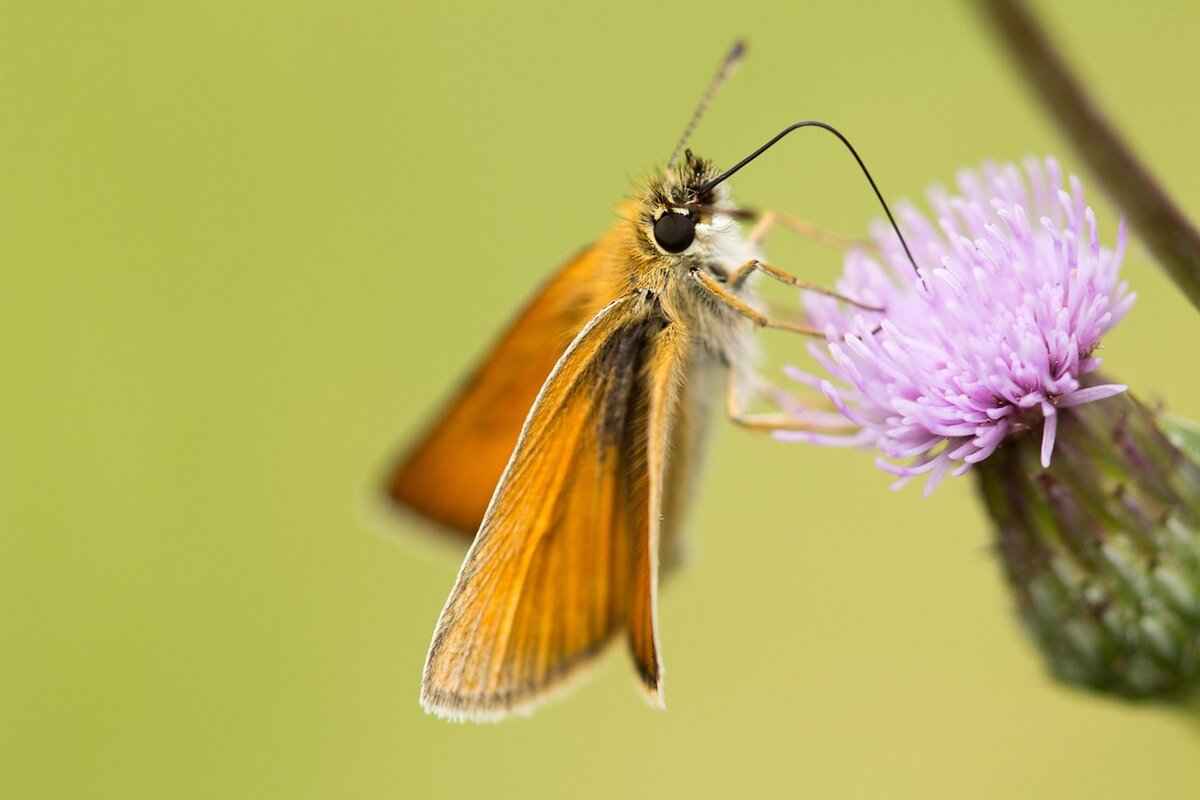
Garlic and Chili Pepper Spray
is a potent, natural solution for deterring a variety of garden pests. These homemade sprays harness the strong scents and flavors of garlic and chili peppers, which many insects find unpleasant. This section will guide you through the process of making and applying these sprays effectively to protect your plants.
To create your own garlic and chili pepper spray, you will need the following ingredients:
- 4-5 cloves of garlic
- 2-3 tablespoons of chili powder (or 1-2 fresh chili peppers)
- 1 quart of water
- 1 teaspoon of liquid soap (to help the mixture adhere to plant surfaces)
Here’s a simple recipe to follow:
1. Begin by blending the garlic cloves and chili powder (or fresh peppers) with water in a blender. 2. Strain the mixture through a fine mesh sieve or cheesecloth into a spray bottle to remove solid particles.3. Add the liquid soap to the strained liquid and mix well.4. Your garlic and chili pepper spray is now ready to use!
When applying the spray, it’s important to follow these guidelines for maximum effectiveness:
- Timing: Apply the spray in the early morning or late afternoon to avoid direct sunlight, which can degrade the mixture.
- Frequency: Reapply every 7-10 days, especially after rainfall or heavy watering, to maintain its potency.
- Target Areas: Focus on the undersides of leaves and areas where pests are commonly found, as this is where many insects tend to hide.
In addition to repelling pests, garlic and chili pepper sprays can also provide a protective barrier for your plants. These sprays can deter aphids, spider mites, whiteflies, and other common garden pests without harming beneficial insects when used correctly. Always test a small area of your plants first to ensure there are no adverse reactions.
For those looking to enhance the effectiveness of their spray, consider adding other natural ingredients such as neem oil or a few drops of essential oils like peppermint or eucalyptus. These additions can further repel insects while also providing additional health benefits for your plants.
Using garlic and chili pepper sprays not only helps in managing pests but also promotes a more sustainable gardening practice. By opting for natural remedies, you contribute to a healthier ecosystem, reducing reliance on chemical pesticides that can harm beneficial insects and the environment.
In summary, garlic and chili pepper sprays are an excellent addition to your natural pest management toolkit. With a few simple ingredients and proper application techniques, you can effectively protect your plants while fostering a thriving garden.

Maintaining Plant Health: The First Line of Defense
Healthy plants are the cornerstone of a thriving garden. When plants are well-cared for, they develop resilience against pests and diseases, making them less susceptible to insect damage. This section delves into best practices for maintaining plant health through proper care and nutrition, ensuring your garden flourishes while minimizing the risk of infestations.
- Soil Quality: The foundation of plant health lies in the soil. Nutrient-rich, well-aerated soil promotes robust root systems. Conduct regular soil tests to determine pH and nutrient levels, and amend the soil as necessary with organic fertilizers or compost.
- Watering Practices: Proper watering is essential. Overwatering can lead to root rot, while underwatering stresses plants, making them more vulnerable to pests. Implement a consistent watering schedule, taking into account the specific needs of each plant species.
- Sunlight Requirements: Different plants have varying light requirements. Ensure that your plants receive adequate sunlight, as this is crucial for photosynthesis and overall vitality. Consider the placement of your plants and adjust as necessary to optimize their exposure to sunlight.
- Regular Pruning: Pruning not only encourages healthy growth but also improves air circulation around the plants. Remove dead or diseased leaves and branches to prevent the spread of pests and diseases. This practice also helps maintain the plant’s shape and promotes better light penetration.
- Fertilization: Providing the right nutrients is vital for plant health. Use organic fertilizers that release nutrients slowly and improve soil structure. Pay attention to the specific nutrient needs of your plants, adjusting your fertilization routine accordingly.
In addition to these practices, it is essential to monitor your plants regularly. Look for early signs of stress or pest activity, such as discoloration or wilting. Early detection allows for timely intervention, which can prevent minor issues from escalating into significant problems.
Companion Planting is another effective strategy for maintaining plant health. Certain plants can deter pests or attract beneficial insects that prey on harmful pests. For example, planting marigolds alongside vegetables can help repel nematodes and other pests. Research companion planting combinations that work well in your garden to maximize plant health and minimize pest risks.
Furthermore, consider incorporating beneficial insects into your garden ecosystem. Ladybugs, lacewings, and parasitic wasps can help control pest populations naturally. Creating a welcoming environment for these allies can significantly enhance your garden’s resilience against insect damage.
Finally, ensure that your gardening practices are sustainable. Avoid using chemical pesticides that can harm beneficial insects and disrupt the natural balance in your garden. Instead, focus on organic methods that promote plant health and biodiversity.
By implementing these best practices, you can foster a healthy garden that thrives and is less prone to insect damage. Remember, a proactive approach to plant care is the best defense against pests, allowing you to enjoy a vibrant and flourishing garden.
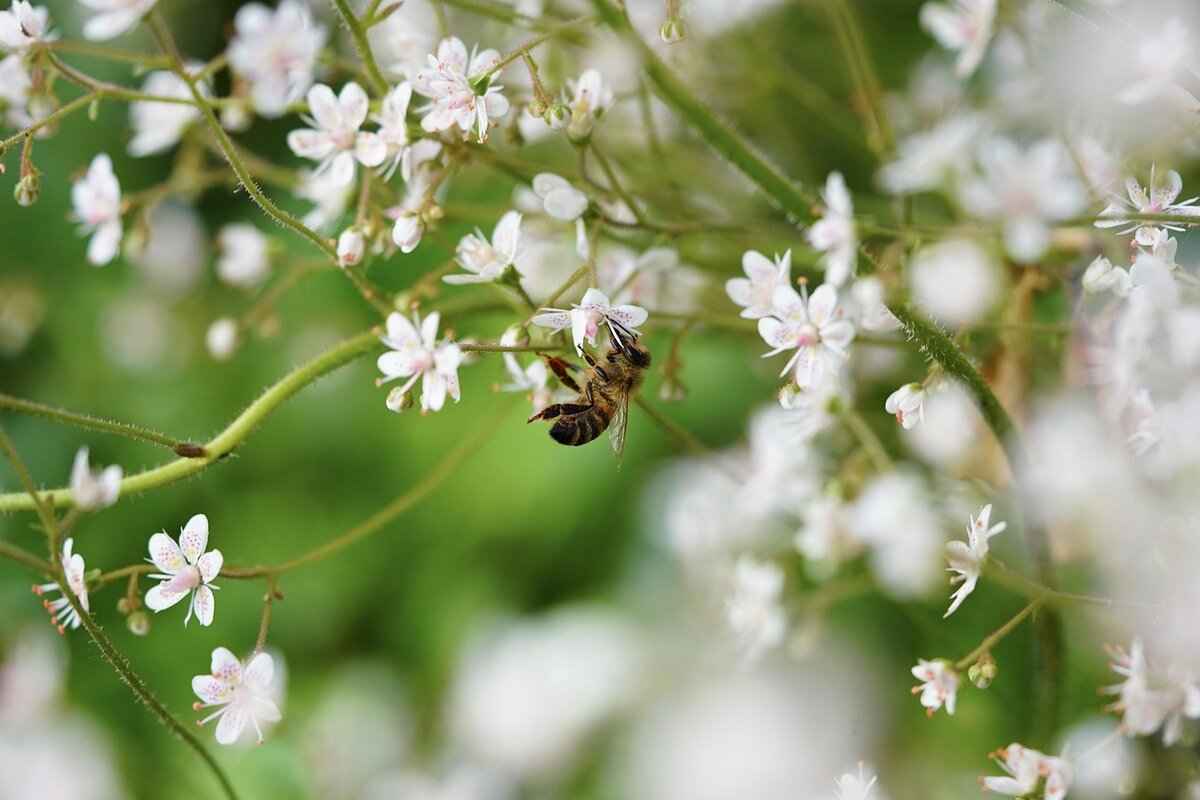
Physical Barriers: Protecting Your Plants
In the quest for a thriving garden, protecting your plants from pests is paramount. One of the most effective methods to achieve this is through the use of physical barriers. These barriers not only shield plants from harmful insects but also allow for natural growth without the need for chemical interventions. This section delves into various physical barrier methods, including row covers and nets, to provide a comprehensive guide for gardeners looking to safeguard their crops.
Physical barriers are protective structures that prevent pests from accessing plants. They work by creating a shield that is difficult for insects to penetrate. Common types of physical barriers include:
- Row Covers: Lightweight fabric that can be placed over crops to create a protective environment.
- Insect Netting: Fine mesh material that allows light and water to reach plants while keeping pests out.
- Garden Fencing: Solid barriers that can deter larger pests like rabbits and deer.
The advantages of employing physical barriers in your garden are numerous:
- Non-Toxic Protection: Unlike chemical pesticides, physical barriers do not pose any risk to the environment or human health.
- Cost-Effective: Many physical barriers can be made from inexpensive materials, making them a budget-friendly option for gardeners.
- Versatility: They can be used in various gardening scenarios, from small home gardens to large agricultural fields.
Row covers are an excellent choice for protecting young plants from pests. They can be made from lightweight fabric that allows sunlight and rain to penetrate while preventing insects from reaching the crops. To effectively use row covers:
1. Choose the right fabric: Opt for a breathable material that provides adequate light.2. Secure the edges: Use soil or stakes to keep the covers in place against wind.3. Monitor for moisture: Ensure that condensation does not accumulate, which can lead to mold.
Insect netting is another effective physical barrier. Its fine mesh design prevents even the smallest pests from reaching your plants. Here’s how to effectively use insect netting:
- Install Properly: Make sure to cover the entire plant and secure it at the ground level.
- Check Regularly: Inspect the netting for tears or holes that may allow pests entry.
- Remove When Necessary: During pollination, it may be necessary to temporarily remove the netting to allow beneficial insects access.
For larger pests like deer or rabbits, garden fencing is a solid option. The fence should be tall enough to deter jumping and buried at the base to prevent digging. Consider these tips:
- Height Matters: A fence should be at least 6-8 feet tall for deer.
- Material Choice: Use sturdy materials such as wood or metal for durability.
- Regular Maintenance: Inspect the fence regularly for any damage or weak spots.
Incorporating physical barriers into your gardening routine can significantly reduce pest problems and promote healthy plant growth. By understanding the various options available and implementing them correctly, you can create a thriving garden ecosystem that minimizes the need for chemical interventions. Whether using row covers, insect netting, or garden fencing, these methods provide a sustainable approach to pest management.
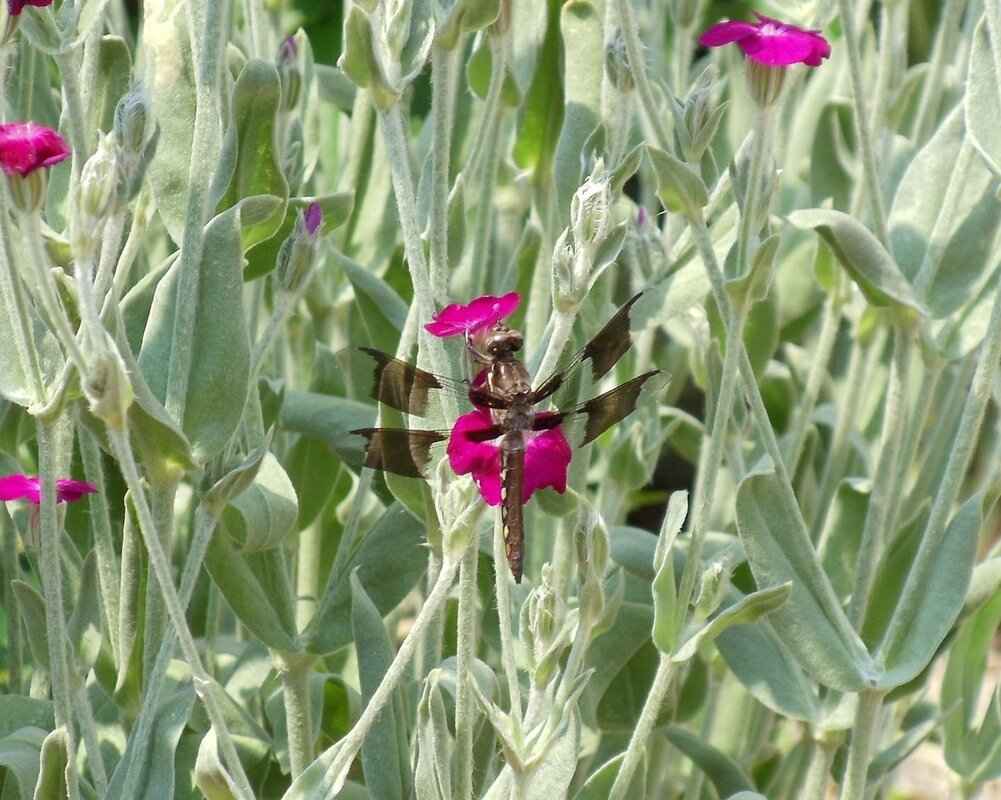
Regular Monitoring and Maintenance
In the world of gardening, regular monitoring and maintenance are fundamental practices that can significantly impact the health and productivity of your plants. Without consistent observation, it can be challenging to detect early signs of pest infestations that can lead to serious damage. This section delves into why routine checks are crucial for maintaining a pest-free garden and how they can be effectively implemented.
Firstly, establishing a monitoring routine is essential. Gardeners should aim to inspect their plants at least once a week. This frequency allows for the early detection of any unusual signs, such as discoloration, wilting, or visible pests. Keeping a garden journal can be beneficial; documenting observations helps track changes over time and identify patterns that may indicate pest issues.
Additionally, understanding the life cycles of common garden pests is vital. Many insects have specific periods of activity, and knowing when these occur can enhance your monitoring efforts. For instance, aphids tend to appear in spring, while caterpillars may be more prevalent in summer. By aligning your monitoring schedule with these cycles, you can preemptively address potential infestations.
Another important aspect of regular monitoring is plant health assessment. Healthy plants are more resilient to pest attacks, so it’s crucial to evaluate their overall condition. Look for signs of nutrient deficiencies, which can weaken plants and make them more susceptible to pests. Regularly checking soil moisture, nutrient levels, and overall plant vigor will help ensure that your plants are thriving.
In addition to visual inspections, employing traps can be an effective strategy for monitoring pest populations. Sticky traps, pheromone traps, and even simple DIY traps can provide insight into the types and numbers of pests present in your garden. This information can help you make informed decisions about pest management strategies.
Moreover, integrating preventive measures into your maintenance routine can greatly reduce the likelihood of pest problems. Practices such as crop rotation, maintaining proper spacing between plants, and using organic mulch can create an environment that is less inviting to pests. These methods not only promote healthy plant growth but also contribute to a balanced ecosystem in your garden.
Finally, it’s important to remember that pest management is not a one-time effort but rather an ongoing process. By committing to regular monitoring and maintenance, gardeners can develop a proactive approach to pest control. This not only protects the plants but also enhances the overall gardening experience by fostering a deeper connection with the garden’s ecosystem.
In summary, routine checks and maintenance are essential components of a successful gardening strategy. By prioritizing regular monitoring, gardeners can detect early signs of pest activity, assess plant health, and implement preventive measures to ensure a vibrant and pest-free garden.

Seasonal Strategies for Pest Management
Effective pest management is not a one-size-fits-all approach; it requires an understanding of the seasonal dynamics that affect pest behavior and plant health. By adapting your strategies according to the seasons, you can significantly enhance the effectiveness of your pest control measures. This section will delve into the seasonal changes that influence pest populations and offer practical adjustments to protect your plants throughout the year.
- Spring: Preparing for New Growth
- Summer: Active Pest Season
- Autumn: Preparing for Winter
- Winter: Planning Ahead
As temperatures rise in spring, many pests emerge from dormancy. This is the ideal time to implement preventive measures. Start by inspecting your plants for any signs of early infestations. Use natural repellents such as neem oil or insecticidal soap to deter pests before they establish themselves. Additionally, consider introducing beneficial insects like ladybugs, which can help control aphid populations.
Summer brings a surge in pest activity, making it crucial to maintain vigilance. Regularly monitor your plants and apply physical barriers, such as row covers, to protect young seedlings. In addition, consider implementing companion planting strategies. For example, planting marigolds can repel nematodes and other harmful insects, creating a more resilient garden ecosystem.
As the growing season winds down, it’s essential to prepare your garden for winter. Remove any debris and dead plant material that may harbor pests. This is also a good time to apply beneficial nematodes to the soil, which can help control pest populations that overwinter in the ground. Additionally, consider using organic mulches to protect the soil and suppress pest activity.
While many pests are dormant in winter, this season is crucial for planning your pest management strategy for the upcoming year. Assess the effectiveness of your previous strategies and make adjustments as needed. Consider conducting soil tests to ensure optimal nutrient levels for plant health, which will enhance their resilience against pests when the growing season returns.
By understanding the seasonal patterns of pest behavior and implementing tailored strategies, gardeners can effectively protect their plants year-round. Regular monitoring, combined with proactive measures, ensures a healthy and thriving garden ecosystem.
Frequently Asked Questions
- What are the signs of insect damage on my plants?
Look for holes in the leaves, discoloration, or sticky residue on the plants. These can indicate that insects are munching away at your beloved greens!
- How can I make homemade insecticidal soap?
It’s super easy! Just mix one tablespoon of liquid soap (not detergent) with a quart of water. Spray it on affected areas to help manage pests.
- What essential oils are effective as insect repellents?
Some powerful options include peppermint, lavender, and tea tree oil. These not only smell great but also keep pesky bugs at bay!
- How do beneficial insects help my garden?
Beneficial insects like ladybugs and lacewings eat harmful pests. By attracting them, you create a natural balance in your garden ecosystem.
- What is companion planting?
Companion planting is when you grow different plants together to deter pests. For example, planting marigolds with tomatoes can help keep aphids away!
- How often should I monitor my plants for pests?
Regular checks, at least once a week, can help you catch any issues early. Think of it like a routine check-up for your plants!

